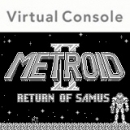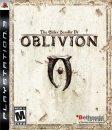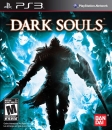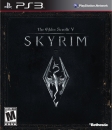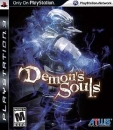Three console generations in one game: Twilight Princess HD
Digital Foundry on how the Wii U remaster is the definitive release.

Three generations of Nintendo home console, one game. The story of Zelda: Twilight Princess' development is now a fabled one, starting as a flirting snippet in a GameCube demo showreel, and finally appearing fully-formed at an electric E3 2004 reveal. However, the game that eventually arrived came much too late for its intended format, forcing a hybrid release on GameCube and Wii. Ten years later, a far more ambitious HD remaster now arrives on Wii U - a machine that shares a core IBM-based architecture with its two predecessors, but uses improved CPU speeds and superior GPU power to achieve full 1080p resolution and a host of other visual upgrades.
All told, initial impressions suggest that it's a worthy follow-up to the Zelda: Wind Waker HD remaster - a definitive release that flattered its source material with a 1080p presentation. We got lighting upgrades back then (via added bloom effects, high dynamic range, and global illumination), as well as improved textures, plus a raft of gameplay tweaks to tighten up the game's overall pacing. As an in-house effort by Nintendo to test the waters of HD development, it set a standard that developer Tantalus now intends to match in Twilight Princess.
Thankfully, the team digs deep to enhance more than the game's looks. We get a raft of gameplay-specific tweaks, plus a slick new UI for item menus, and also GamePad support that affords an on-screen map and toggle to Link's wolf form. A new Hero mode also adds replay value here, flipping the world to match the Wii's 'inverted' layout (while the default mode matches the GameCube's original orientation), and upping the difficulty in dungeons.
On a technical slant, Twilight Princess HD sticks with the original geometric meshes for characters and world design at large. It's a template that goes all the way back to the project's GameCube origins, and it can show. But of course, the main gain is made in the jump from 640x480 of the original releases, to the crisp 1920x1080 delivery on Wii U. Reinforced by a post-process anti-aliasing technique, the game could have looked garish by modern standards if left as-is - had it not also been for upgrades to its textures and shadows.
What a difference ten years makes. Zelda: Twilight Princess HD on Wii U as directly compared to the Wii launch title from 2006. It's a satisfying upgrade in textures and image quality, but geometric elements are left as-is.
The leap in texture quality is tremendous, and largely speaks for itself in our above comparison video. Every surface, right down to smaller points of detail like Link's hair tufts, or the fence-work around Ordon village, gets the same attention. Higher resolution, sharper assets stand in place of the old, and lifting the stricter RAM constraints of Nintendo's older machines means Tantalus can sweep through the entire game in this fashion. No stone is left unturned, and it's hugely satisfying to see the upgrade in effect (with the only snag being the low level of texture filtering across the ground).
In terms of lighting, the gains aren't as pronounced as Wind Waker HD's improvements, though they're still evident. What we see here is a more precise bloom and light shafts that don't bleed around objects to such an exaggerated degree as the GameCube release - though it sits well with a 1920x1080 presentation. Equally, shadows see only a minor upgrade; sharper outlines to character shadows, though some aliasing remains on show when we get foot-level camera shots. It's a small improvement, but it makes a difference.
One aspect that took us by surprise is the washed out look to some areas in the remaster. This isn't due to the Wii U's use of limited range RGB, and even with full 0-255 RGB correction implemented in our shots, Twilight Princess presents a very muted colour palette at points. It's an issue with the GameCube and Wii versions too, perhaps in response to the fan reaction towards the cel-shaded style of Wind Waker. However, the result is a mundane, drained look around Ordon village and early dungeons that can look odd - particularly in our captures - when compared to later areas.
Performance is largely a solid 30fps in the Wii U remaster. Even taxing areas like the Hyrule plains run without any drops - with only Faron Woods' use of alpha transparencies causing issues.
On the visual front, the changes are less obvious from this point onwards. While geometry is to a great extant fixed in place from the older versions, we do get some scarse decorative detail added. A fly-by shot on first summoning an owl shows more trees added to the distance, where the Wii release appears bare by comparison. Post effects like depth of field are also dialed down in intensity; again, a subtler look that works better with a 1080p output.
In the direct A to B comparisons these are the main areas of change, but everything else in Twilight Princess remains as you remember it. This extends to the 30fps target as well, which sadly hasn't been pushed any further. The general competence of the port is solid where performance goes, and a solid 30fps is precisely what we get in chasing across Hyrule's open plains. One spot that does noticeably drop is the Faron woods, lurching at lowest to 24fps as a result of a fog effect. Outside of this, the Wii U release holds up very well as a whole, though it's clear memory bandwidth is at a limit when sustaining a 1920x1080 frame-buffer while also layering alpha transparencies over the top.
The main success of this remaster - as with any good effort in this discipline - is delivering the Zelda Twilight Princess not as it necessarily was back in 2006, but as we remember it, where nostalgia works wonders in smoothing off edges and making us more forgiving of what were originally some very low resolution art assets. The work done by Nintendo and Tantalus here is satisfying, and while the game itself lacks the timeless visual style of Wind Waker, our initial testing suggests that the title never looked or played better. As a stop-gap between now and the long-awaited Zelda follow-up on Wii U, it's far better than we had expected going in. All the signs so far suggest that this is the definitive release, and one which stays our patience until Link's next console outing.























